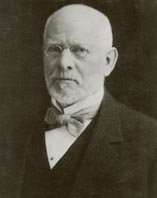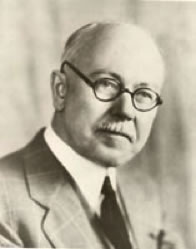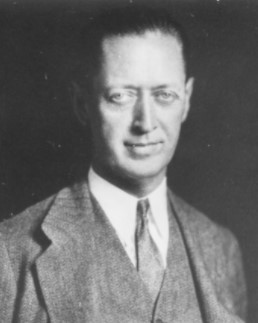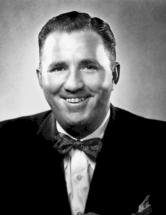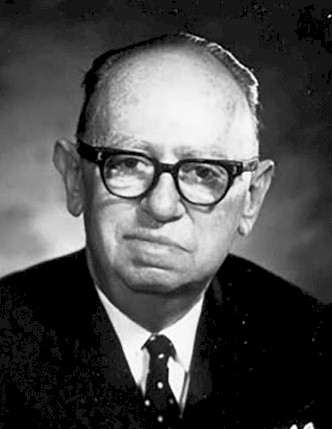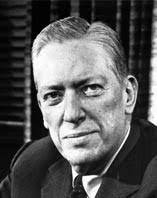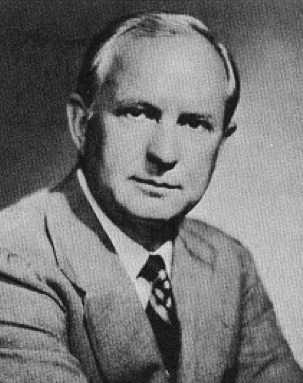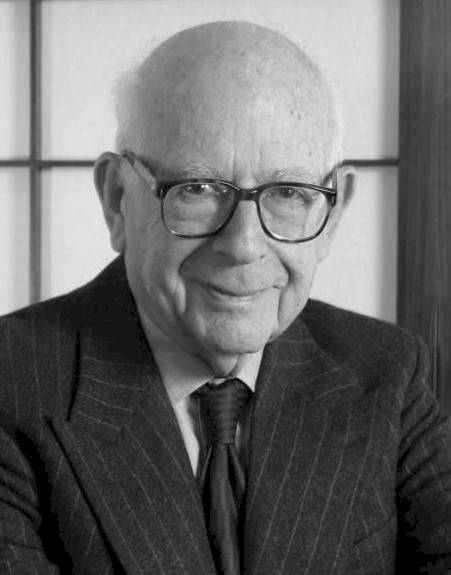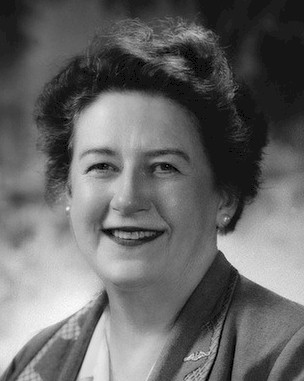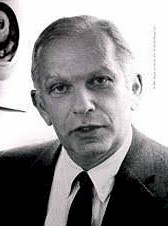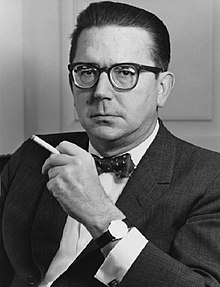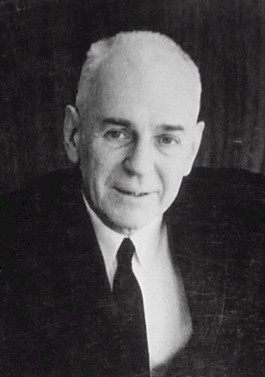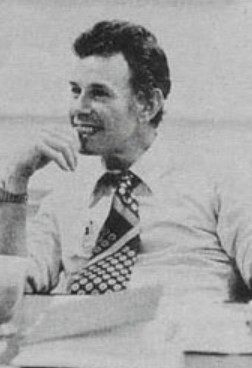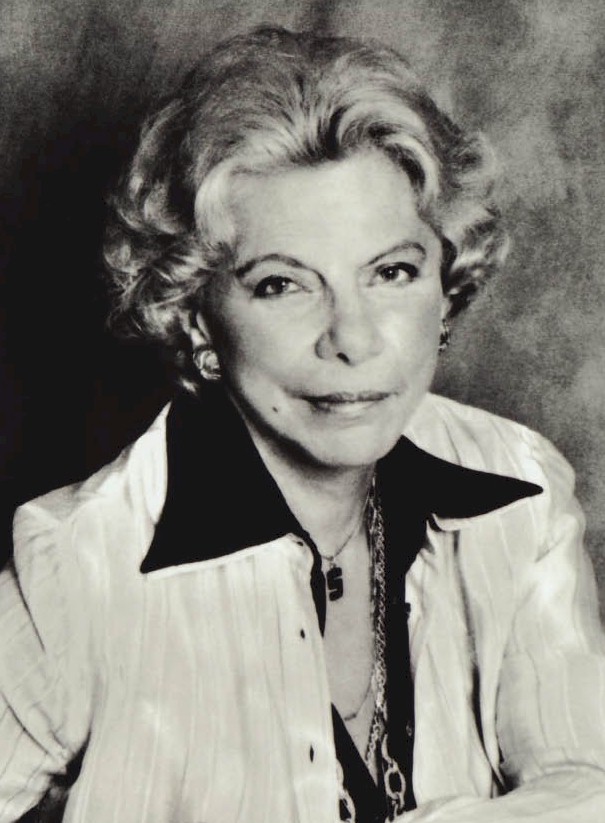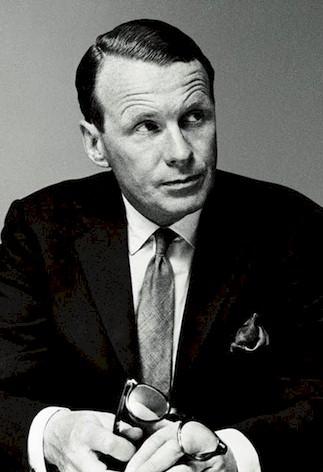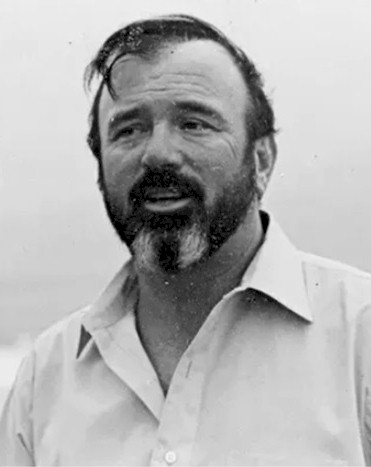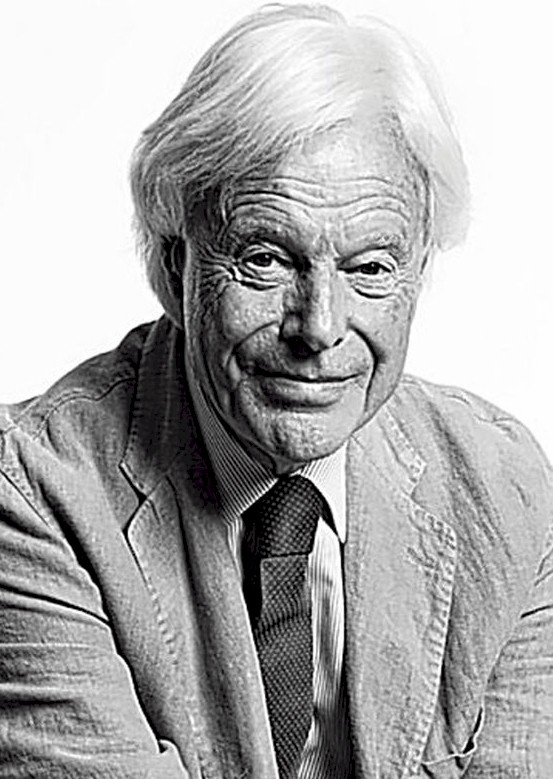They may have passed on but their legacies remain an example for those of us who’ve followed. Here are 17 pieces of advice from departed content marketers – dead copywriters do tell tales!
John Emory Powers (1837-1919)
“The first thing one must do to succeed in advertising is to have the attention of the reader. That means to be interesting. The next thing is to stick to the truth, and that means rectifying whatever’s wrong in the merchant’s business. If the truth isn’t tellable, fix it so it is. That is about all there is to it.”
John Emory Powers was a highly influential copywriter. Recognised as the world’s first full-time copywriter, he was inducted into the Advertising Hall of Fame in 1954.
Powers possessed a unique copywriting style, now recognised as the ‘Powers style’ and also known as the ‘reason-why’ style. His style contrasted to the ‘Barnumesque’ style of broad claims or emotional appeals. Powers used simple language, limited his headlines to short words and avoided exaggerations. He also used no illustrations or diagrams in his copy. Powers pushed the use of simple language and described “fine writing” as “offensive”. He focused on facts alone and refused to write for products unless he was convinced of their merits.
Claude C. Hopkins (1866-1932)
“Remember the people you address are selfish, as we all are. They care nothing about your interests or profit. They seek service for themselves. Ignoring this fact is a common mistake and a costly mistake in advertising”
Claude C. Hopkins was one of the great advertising pioneers, believing that advertising only existed for sales and should be measured by results alone. He was associated with popularizing tooth brushing, due to his Pepsodent toothpaste campaign results. His book “Scientific Advertising” was published in 1923
Hopkins tracked the results of his advertising, testing headlines, offers and concepts against each other. He used these analyses to improve future results, driving responses and the economic viability of his clients’ advertising. Hopkins once sent out 5000 letters recommending Bissell Carpet Sweepers as Christmas gifts, and received a return of over 1000 orders.
Robert Collier (1885-1950)
“In every adversity there lies the seed of an equivalent advantage. In every defeat is a lesson showing you how to win the victory next time.”
Robert Collier was an author who was involved in writing, editing, and research for most of his life.
His book “The Secret of the Ages” sold in excess of 300,000 copies during his lifetime. Collier’s writings about the practical psychology of abundance, desire, faith, visualization, confident action, and personal development form the foundation to many content marketing techniques currently used.
Elmer Wheeler (1903-1968)
“The real wit tells jokes to make others feel superior, while the half-wit tells them to make others feel small.”
Elmer Wheeler was well known as one of the pioneers of persuasion. He devised the ‘Wheelerpoint’ formula of copywriting.
Wheeler’s ‘Wheelerpoint’ copy was revolutionary in that it was laid out in metaphorical form, leaving a lot to the imagination of those interested in utilizing it. Five points are included – “Don’t sell the steak – sell the sizzle”, “Don’t write – telegraph!”, “Say it with flowers”, “Don’t ask if – ask which” and “Watch your bark!” – which enable the user’s creativity to read between the lines and apply the valuable advice that lies therein.
Leo Burnett (1891-1971)
“Good advertising does not just circulate information. It penetrates the public mind with desires and belief.”
Leo Burnett was the advertising executive behind some of advertising’s most well-known characters of the last century, including Tony the Tiger and the Marlboro Man. He forged relationships with multinationals like McDonald’s, Hallmark and Coca-Cola.
Burnett used dramatic realism in his advertising, the ‘Soft Sell’ approach to build brand equity. He believed in finding a product’s “inherent drama” and presenting it in advertising through empathy, emotion and experience. Burnett advertised with easy, bold and inherent imagery that spoke to his audiences. He was known for using “cultural archetypes” in his copy, creating mythical creatures representing American values.
Fairfax M. Cone (1903-1977)
“Write to one person, not a million.”
Fairfax M. Cone was a businessperson, advertising executive and copywriter. He is sometimes called the “father of modern advertising” and is a member of the American National Business Hall of Fame.
Cone had great respect for the judgment of the supermarket shopper and strove for clarity and candour in advertising; he disliked copy that was facetious or “gimmicky.” He was noted for his devotion to educational and philanthropic projects.
Raymond Rubicam (1892-1978)
“Mirror the reader to himself and then show him afterward how your product fits his needs. The only purpose of advertising is to sell. It has no other function worth mentioning. The value of an ad is in inverse ratio to the number of times it has been used.”
Raymond Rubicam was an advertising pioneer who co-established the Young & Rubicam (Y&R) advertising agency with John Orr Young. Young & Rubicam was the first agency to use scientific telephone sampling and to test audiences in order to measure the success of advertisements.
Rubicam’s imaginative leadership and creativity earned him the moniker of “advertising’s statesman.” His creative concepts and innovations continue to play a primary role in today’s advertising and he is widely considered to be the “father of modern advertising”. His philosophical copywriting approach changed the industry. Rubicam regarded knowledge and understanding of the customer as a vital cog in the wheel that is effective advertising. Assisted by Dr. George Gallup, he was the pathfinder in devising new methods of consumer and media research.
Victor O. Schwab (1898-1980)
“Poor copy cannot overcome faults or gaps in dealer distribution; it cannot even cash in on the finest dealer setups. But good copy can, and does, surmount many dealer difficulties, making them secondary, and selling in spite of them.”
Victor O. Schwab was a famous direct marketing copywriter whose work for Dale Carnegie’s “How to Win Friends and Influence People” largely contributed to its success in the 1930s. He was a pioneer of copy research, frequently using coded coupon ads to test advertisements. When the coupons returned, he could easily track which ads it came from, the headlines, copy appeals, length, layouts, etc.
In a series five 1941 articles titled “How to Write a Good Advertisement”, which he later developed into a best-selling book, Schwab introduced a five-step copywriting formula: Get Attention, Show People an Advantage, Prove It, Persuade People to Grasp This Advantage and Ask For Action.
Bernice Fitz-Gibbon (1894-1982)
“A good ad should be like a good sermon: It must not only comfort the afflicted, it also must afflict the comfortable.”
Bernice Fitz-Gibbon was an advertising executive and retail advertising pioneer. She was inducted into the Advertising Hall of Fame in 1982 and was included in the “100 People of the 20th Century” list by Advertising Age. Fitz-Gibbon was known for her “Fitzkreigs”, described as “a blitz of words springing from the rapier-sharp and highly imaginative brain of Miss Fitz-Gibbon.”
Fitz-Gibbon is known as one of the most successful retail ad makers in the history of advertising, bringing wit, intelligence and an elegant touch to her field. Her proficiency in the English language meant that her copy stood apart from the rest. Fitz-Gibbon changed the way that stores dealt with customers and the impressions that the customers had of the stores. Her ads for Macy’s, Wanamaker’s and Gimbel’s achieved worldwide fame. Known as an inspirational educator, Fitz-Gibbon was responsible for teaching a number of young copywriters. These “Fitz-trained” copywriters quickly became sought-after in the field. Emphasis on observation and language was fundamental to her management and, by the early 1950s, she was reported to be the highest paid woman in advertising.
Bill Bernbach (1911-1982)
“There are a lot of great technicians in advertising. And unfortunately they talk the best game. They know all the rules. They can tell you that people in an ad will get you greater readership. They can tell you that a sentence should be this short or that long. They can tell you that body copy should be broken up for easier reading. They can give you fact after fact after fact. They are the scientists of advertising. But there’s one little rub. Advertising is fundamentally persuasion and persuasion happens to be not a science, but an art.”
Bill Bernbach was an advertising creative director who directed many breakthrough ad campaigns and had a lasting impact on creative team structures now commonly used by ad agencies.
Bernbach was creative and unconventional, and is credited as having a major impact in the 1960s and 70’s Creative Revolution. His work was often identified by its simple persuasive qualities and he is recognised as the first person to combine copywriters and art directors into teams, a model that still exists today.
Rosser Reeves (1910-1984)
“No, I don’t think a 68-year-old copywriter . . . can write with the kids. That he’s as creative. That he’s as fresh. But he may be a better surgeon. His ad may not be quite as fresh and glowing as the Madison Ave. fraternity would like to see it be, and yet he might write an ad that will produce five times the sales. And that’s the name of the game, isn’t it?”
Rosser Reeves was a copywriter and advertising executive who pioneered television advertising, generating millions of dollars for his clients.
Reeves believed that advertising’s sole purpose was to sell. He was adamant that an advertisement or commercial should portray the value or unique selling proposition (USP) of a product, not the genius of a copywriter. Reeves’ ‘annoying’ ad for Anacin, a headache medicine was incredibly successful. In 7 years the minute-long commercial generated more than the movie ‘Gone With The Wind’ had in 25 years.
John Caples (1900-1990)
“Every single element in an advertisement – headline, subhead, photo, and copy – must be put there not because it looks good, not because it sounds good, but because testing has shown that it works best!”
John Caples was a pioneer in applying scientific methods to advertising. He wrote one of the best-known direct-mail ads of all time – “They laughed when I sat down at the piano, but when I started to play!”
Caples advocated testing the effectiveness of advertising throughout his working life. Although not a trained researcher, he supervised continuing test campaigns for The Wall Street Journal and Reader’s Digest. Caples’ research focused not only on the copy but also the medium, size, colour, position and seasonal attraction of ads as well. He believed that only tried-and-tested elements should be used to create new ads.
Eugene M. Schwartz (1927-1995)
“Copy is not written. If anyone tells you ‘you write copy’, sneer at them. Copy is not written. Copy is assembled. You do not write copy, you assemble it. You are working with a series of building blocks, you are putting the building blocks together, and then you are putting them in certain structures, you are building a little city of desire for your person to come and live in.”
Eugene M. Schwartz was an advertising copywriter whose specialty was direct-mail campaigns, He wrote 10 books, including “Breakthrough Advertising” and “The Brilliance Breakthrough.”
Schwartz was responsible for some of the most memorable lines in direct-mail advertising, including “Give Me 15 Minutes and I’ll Give You a Super-Power Memory”, for memory expert Harry Lorraine’s first book.
Shirley Polykoff (1908-1998)
“Copy is a direct conversation with the consumer.”
Shirley Polykoff got her first job as an advertising copywriter for a women’s fashion and specialty store in Brooklyn. Writing headlines like, “Look like you’re going to the races when you’re only racing to the grocers” and “Rhinestones, a girl’s next best friend,” she quadrupled her salary within months. She subsequently became lead fashion writer for the major department stores, Bambergers and Kresges, in New Jersey.
At 47 years old, Polykoff was recruited by Foote, Cone & Belding to work on their Clairol account. The “Does she … or doesn’t she?” campaign Polykoff created made it possible for a number of women to colour their hair while still being members of the PTA.
Other memorable campaigns for Clairol, including “If I’ve only one life, let me live it as a blonde!,” and “The closer he gets, the better you look.” followed, with Polykoff soon becoming FCB’s highest-paid employee. She rose to become a senior vice president, creative board chairman in New York and the first female on the Board of Directors. Polykoff was named National Advertising Woman of the Year in 1967. It is believed that the Peggy Olson character from television series “Mad Men” is based on Polykoff.
David Ogilvy (1911-1999)
“Never write an advertisement which you wouldn’t want your family to read. You wouldn’t tell lies to your own wife. Don’t tell them to mine.”
David Ogilvy was an advertising tycoon known as the “Father of Advertising”. He attributed his successful campaigns to painstaking research into consumer habits. He wrote the best-sellers “Ogilvy on Advertising” and “Confessions of an Advertising Man”. Ogilvy was responsible for putting numerous training programs for younger advertisers into place.
Ogilvy’s advertising philosophy was based around four basic principles: creativity, research, results and discipline. He was best known for building and establishing brands, but his primary interest lay in direct marketing. He is recognised for praising direct marketers while often lambasting “general” or branding advertising, referring to branding people “worshiping at the altar of creativity.”
Gary Halbert (1938-2007)
“Then, of course, what you do, is rewrite the rough spots and read the copy out loud again. And, what you do is you keep repeating this process until your copy is completely smooth and you can read it without stumbling at all.”
Gary Halbert was one of the top copywriters of the last half a century. He was a revered direct marketing expert who wrote brilliantly effective ad copy.
Halbert was also influential in devising ways to present ad copy to prospects using direct mail and space ads. He was also a top-rate educator, introducing entrepreneurs to the effectiveness of direct marketing. He was adept at transforming his wealth of experience and huge knowledge base into easy-to-understand fundamentals that were of benefit to all.
David Abbott (1938-2014)
“I spend a lot of time fact-finding and I don’t start writing until I have too much to say. I don’t believe you can write fluent copy if you have to interrupt yourself with research. Dig first, then write.”
David Abbott was a celebrated copywriter and advertising executive often described as the greatest copywriter of his generation. He did work for Yellow Pages, Volkswagen, Volvo, The Economist, The RSPCA, Sainsbury’s Supermarkets and Chivas Regal.
Abbott was a dignified, ethical and quietly-spoken man who spoke intelligently through his work. He studied human nature, often watching and listening whilst others shopped and chatted. His copy spoke in his audience’s language, targeting their thoughts and emotions instead of their pockets. Abbott recognised that his audiences were most interested in what was valuable and useful, whilst also making their experiences more pleasurable by including a touch of witty humour too.
Conclusion
Although there are similarities between some of the content marketers included on the above list, there is only one characteristic that undisputedly links them – they are all deceased. This fact may come across as a little morbid, it is probably more apt to remember it in this way: these men and women, when alive, were experts and often pathfinders in their respective fields, and as such, have left legacies that continue to speak to us from the grave. The combined expertise, experience and impact of these late, great professionals will continue to educate members of the advertising, copywriting and marketing sectors for years and years to come. Dead copywriters do tell tales.
- Technology and the future of books - July 29, 2021
- The benefits and importance of UX writing - July 29, 2021
- Use the science of music as a tool to enhance creative productivity - July 28, 2021

